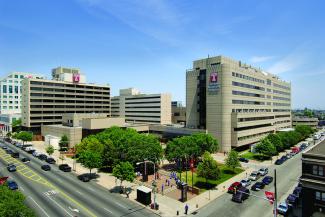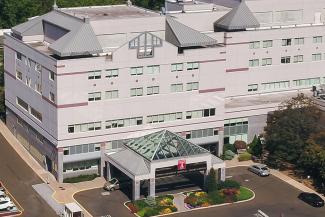Knee replacement surgery can help ease joint pain in the arthritic knee and improve mobility – helping individuals enjoy pain-free activities of daily life. During the procedure, your orthopedic surgeon replaces the damaged/diseased joint with metal and high grade plastics to allow it to move like a healthy knee again.
Your provider may recommend knee replacement surgery if conservative treatments fail to address your pain or improve mobility caused by:
- Osteoarthritis – Osteoarthritis is the natural degeneration of cartilage and bone in the knee joint as you age. This breakdown causes chronic knee stiffness, weakness and giving out of the leg that interferes with your daily activities.
- Joint pain – Chronic joint pain can also be caused by a prior traumatic injury to the knee or a chronic condition, including Lyme disease, rheumatoid arthritis or gout.
Recovery Timeline
Knee replacement surgery is considered a complex procedure. At Temple Health, many of our patients are up and walking within a day of the procedure. Our care team includes patient educators, rehabilitation specialists, nurses and surgeons to help prepare you for every stage of surgery – from before you arrive at the hospital to recovering at home.



